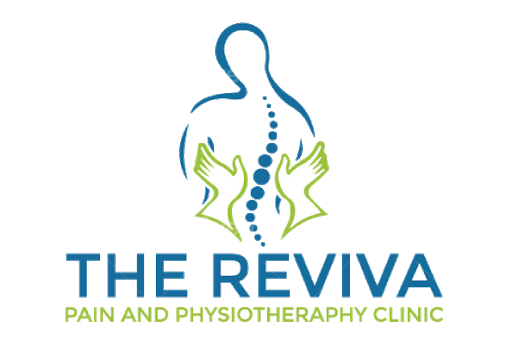The manual treatment has been oftentimes used to diminish low back torment and increment the scope of joint movements. Godges expressed that among manual treatment strategies, joint assembly methods are profitable for clinical use in the treatment of low back torment. announced that when manual flexion-diversion revision was connected to 94 out of 100 patients with low back torment or lower limit agony, great or fantastic outcomes were gotten by 73%, and low back torment and lower furthest point torment were decreased by half in 15.95 days. In an examination directed by Ferreira et al., when manual spinal treatment was managed to interminable low back agony patients, actually huge abatements were found in VAS scores. Kruse and Cambron announced that when Cox’s flexion-diversion treatment was actualized 16 times on patients with L3– 4 and L4– 5 intervertebral circle herniation who revealed lumbar neuropathy, the patients’ numeric agony scale scores fundamentally diminished. Wheeler and Hanley connected Cox’s flexion-diversion treatment 12 times to sprain or strain patients, and the patients demonstrated great or fantastic reactions in the L4– 5 locale at rates of 83.1% and 83.5% individually. Gose announced that decompression treatment lessened agony, expanded versatility, and indicated critical impacts through changes in MRI pictures.
In the present investigation, both the MTG and the DTG demonstrated huge declines in VAS scores inside each of the gatherings. The huge abatements in VAS score in the MTG are considered to have happened on the grounds that the joint assembly strategies and flexion-diversion procedures connected to the spine animate the mechanical receptor that smothers the transmission of agony jolts at the level of the spinal line and mind stem to create torment decreasing impacts; in the manual spinal treatment, the developments of the joints diminish the transmission of boosts by the tendons and particular cases, which are torment delicate tissues, in the spine to lessen torment. The noteworthy reductions in VAS scores in the SDTG happened in light of the fact that spinal decompression treatment creates a negative strain to decrease the weight inside the intervertebral circle to beneath −100 mmHg, builds the measurement of the intervertebral foramen through a partition of the centrum, and assuages the weight on the sensory tissues, in this manner diminishing emanating torment and the neurologic defect6, An expansion in the distance across of the intervertebral foramen can initiate an increment in blood course through the veins in spinal nerves and the intervertebral foramen, and the expanded bloodstreams can evacuate incendiary exudate. Also, spinal decompression treatment builds the era of constituents through decompression to enhance the capacity to tie to water with the goal that the water content increments and the alleviation of degenerative changes empower expanded sustenance supply. Accordingly, the space in the spinal pit is enlarged, and the paraspinal muscles and tendons are reached out to decrease optional myofascial pain5.
In an investigation of the connection between flexion-diversion treatment and intervertebral plate spaces, Gudavalli explored different avenues regarding the lumbar vertebrae in dead bodies and announced that the L4– 5 circle space expanded by around 1.87 mm, the intervertebral circle point expanded by roughly 3.5°, and the L5– S1 circle space and edge expanded by roughly 3 mm and 6°, separately. Gay. detailed diversion procedures performed on 15 dead bodies, and estimations of core pulpous weight and annulus fibrosus compressive anxiety showed a weight diminish in the intervertebral circle of 99% utilizing diversion methods, 73% utilizing augmentation diversion strategies, and 65% utilizing flexion-diversion systems. Ozturk revealed that patients with herniated intervertebral plates treated with footing treatment indicated noteworthy impacts in straight leg raise and circle herniation records.
In the present investigation, correlations inside gatherings demonstrated that plate statures essentially expanded in the MTG treated with joint activation methods and flexion-diversion systems, however, demonstrated no huge distinction in the SDTG. The explanation for these outcomes is that the use of joint preparation procedures and flexion-diversion strategies created negative weight in the intervertebral circle space so the plate part that was pushed to the back of the intervertebral plate went inside and the vertebral mash was situated in the focal point of the annulus fibrosus. This expelled boosts from the annulus fibrosus strands that vibe torment and re-established the physiological developments of the spinal joints, diminishing low back torment and inciting basic changes, i.e., broadening the spaces between spinous procedures to extend the spaces between intervertebral discs. What’s more, the previously mentioned methods increment the distance across the intervertebral foramen, decrease weight on the sensory tissues, extend the spaces between the intervertebral plates, and open the back engine units by growing the sagittal width in the spinal canal. The anxiety forced on the back circle diminishes as the spinal feature joints are opened by flexion-diversion remedy, and the deficiently separated spinal aspect joints recuperate to give the typical scope of back spinal developments.
There were a few restrictions of this investigation. To begin with, the number of subjects was little in light of the fact that the subjects were chosen from the individuals who went to the clinic for a month and a half. Second, the subjects’ day-by-day lives couldn’t be totally controlled. Third, the treatment time frame was short, and hence long haul checking was unrealistic. In future examinations, the impacts of long-haul decompression treatment and manual treatment ought to be analyzed utilizing a substantial gathering of patients.



